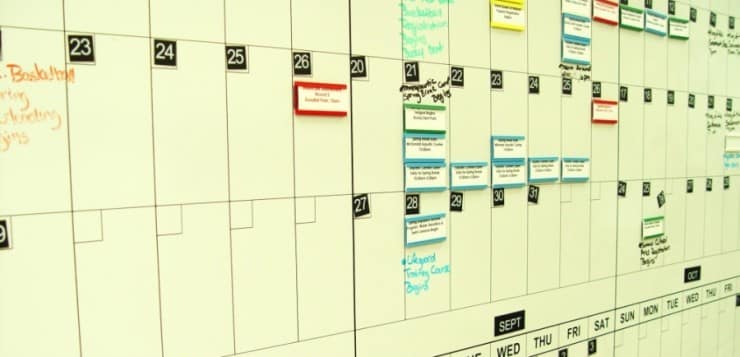So, you’ve decided to apply to grad school – congratulations!
Once you’ve made the decision and narrowed down your program(s), you need to get started on applying. Preparing your grad school application can take time and research. So here’s a handy checklist to help you get started!
Make a deadline list
This should be done a few months in advance. The last thing you want is to miss an application deadline and have all your preparation work go down the drain. Research is key – make a list of all the programs you are applying to, and take a look at their website. Most schools will have a page with a list of deadlines and important dates. Bookmark these pages on your computer, or save those URLs for easy reference in a document.
Make mention of these dates in an organizer you use often. Don’t just write down the deadline date – think about how much time you’ll need to complete the task for the deadline. Then mark in your calendar a reminder to get started. If you’re not sure how much time you’ll need, always allot extra time – and putting down several reminder notes doesn’t hurt either.
If you don’t have a daily organizer, get a big wall calendar. Break out those coloured pens and highlighters – it’s hard to miss a circled date in neon yellow when you pass by!
Know the admission requirements
You can do this research at the same time when you’re blocking out you deadlines. You don’t want to invest time and energy applying just to find out you’re not eligible for the program you have your heart set on.
Next, find out what you need in your application. Aside from the application form, many universities will want to see academic transcripts, your professional background, a letter of intent, and even referees. Make a checklist of each item that needs to be done, and block out when you will get each item done in your calendar or organizer. While this won’t seem like much to gather months in advance, some of these items will take time to process, such as your academic transcript. Don’t assume the system will be lightning fast – allot extra time for delays.
Research scholarships and financial aid
Investing in education can be pricey – but if you plan ahead, you can minimize the amount of student debt you incur.
Do a web search on scholarships and financial aid that you are eligible for, and compile a list. Make sure that you record the dates of when each application is due – because of the time it takes to prepare these applications, it’s best to start planning these a couple of months in advance.
Plan each application and block in the deadline, as well as the time it will take to prepare it in your calendar or organizer. It’s also a good idea to set up a tracking sheet – having a spreadsheet document for each of your applications is great for monitoring which scholarships you’ve successfully received, which you’ve been turned down for, and which you need to follow up on.
Write, write, and rewrite!
Most grad schools accept their applications online, which makes the process a lot easier on the applicant. But don’t make the mistake of thinking that you can write your application and admissions essay the night before and submit it a minute before the deadline.
Craft your written pieces a few weeks in advance. Once you’ve finished your first draft, leave it for a day or so, and come back to it. Coming back to your paper after a break will allow you to re-read your draft from an evaluator’s perspective. You might even come up with some new ideas to include in your writing that you may not have thought of the night before.
It’s also a good idea to have someone else proofread your writing. Have a mentor or a professor look over your application and listen to their feedback. Chances are, they will have some insights you never considered – especially if they have been through the same process before.
Monitor your acceptances
Your scholarships shouldn’t be the only thing you’re keeping track of – if you are sending out multiple applications to grad school, setting up a spreadsheet is a great idea for that as well.
Have your document track the status of your applications. For example, you can colour-code an application orange if it has all the components and it’s ready to send. Once it’s sent, you can track the results – if you’ve been accepted, mark it green. If you haven’t been accepted, mark it red. For any outstanding documents that are still marked orange, you will know to follow up on them.
You can customize this tracker to include any other information that you want to track – for instance, leave a section for additional notes if you need to remember something specific about that application.
Grad school checklist: a recap
- Research – Figure out the requirements for each application you submit
- Set deadlines – Note down deadlines in a calendar or organizer, and block out time periods and reminder so you know when to get started
- Find scholarships and financial aid – Do your research and block out deadlines for applications.
- Write your application – Craft your written pieces well in advance. Have a mentor or professor review your application.
- Track your acceptances – Create a spreadsheet to keep track of the programs you’ve been accepted to. Follow up with schools you have not heard from.
By Veronica Yao, TalentEgg.ca
TalentEgg.ca is Canada’s leading job board and online career resource for college and university students and recent graduates.








